In the dynamic landscape of teamwork and collaboration, the need for effective feedback mechanisms is paramount. An emerging approach gaining significant traction in this regard is "Start Stop Continue."
In this comprehensive article, we will not only elucidate the essence of start stop continue technique but also delve into its intricate workings within teams. Moreover, we'll provide you with 8 start stop continue examples for teams, poised to ignite your imagination and catalyze your journey toward effective feedback implementation.
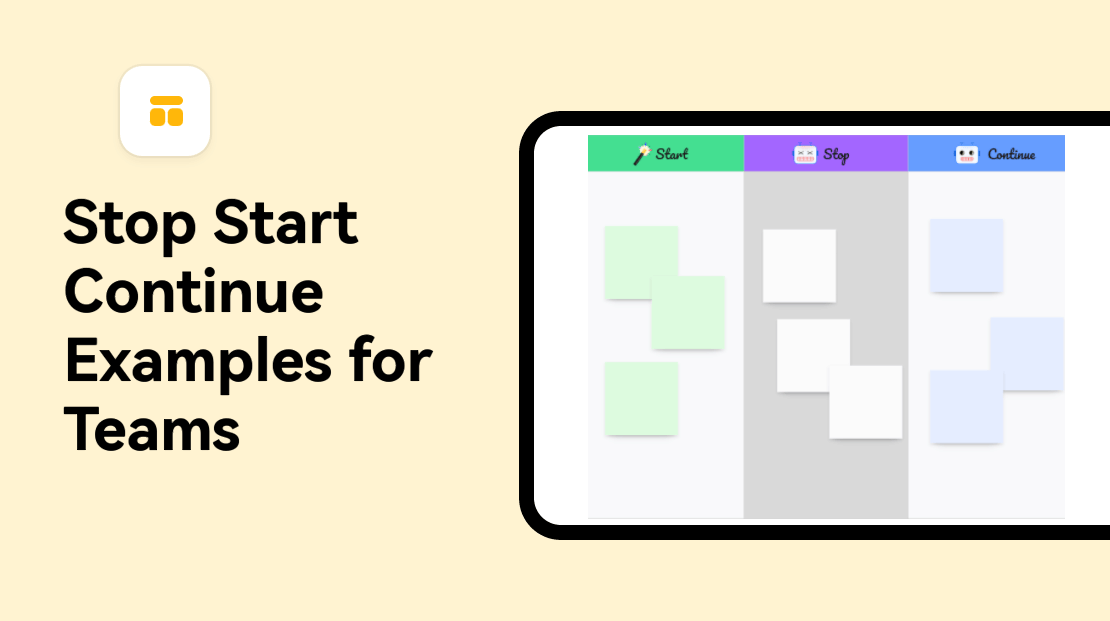
What Is Start Stop Continue
Start stop continue is not merely a feedback technique; it's a philosophy that encourages teams to engage in reflective practice. It involves the deliberate identification of actions to commence, actions to halt, and actions to sustain in pursuit of enhanced performance. This approach transcends conventional feedback methodologies by instilling a culture of action and continuous improvement.
How Does the Start Stop Continue Feedback Work in Teams
Within the realm of teams, start stop continue serves as a catalyst for transparency and growth. It operates as an open forum where team members collaboratively contribute insights into the initiation of new practices, the cessation of detrimental habits, and the perseverance of productive behaviors. This transparency forms the cornerstone of successful teamwork.
8 Start Stop Continue Examples for Teams
Here are some start stop continue examples for teams. So:
Start Stop Continue Examples for Teams - Revamp Onboarding Procedures
Start: Begin by implementing a mentorship program for new hires. Assign experienced team members to act as mentors, providing personalized guidance during the onboarding process. This will help newcomers integrate more smoothly into the team and understand their roles better.
Stop: Cease relying solely on generic onboarding videos and materials. While these resources are informative, they lack the personal touch that a mentorship program can provide. Relying solely on them may lead to a sense of isolation for new team members.
Continue: Maintain the practice of conducting weekly check-ins with new hires. These meetings provide a platform for addressing any questions, concerns, or challenges they may be facing. It's an opportunity to offer additional support and ensure they are settling in comfortably.
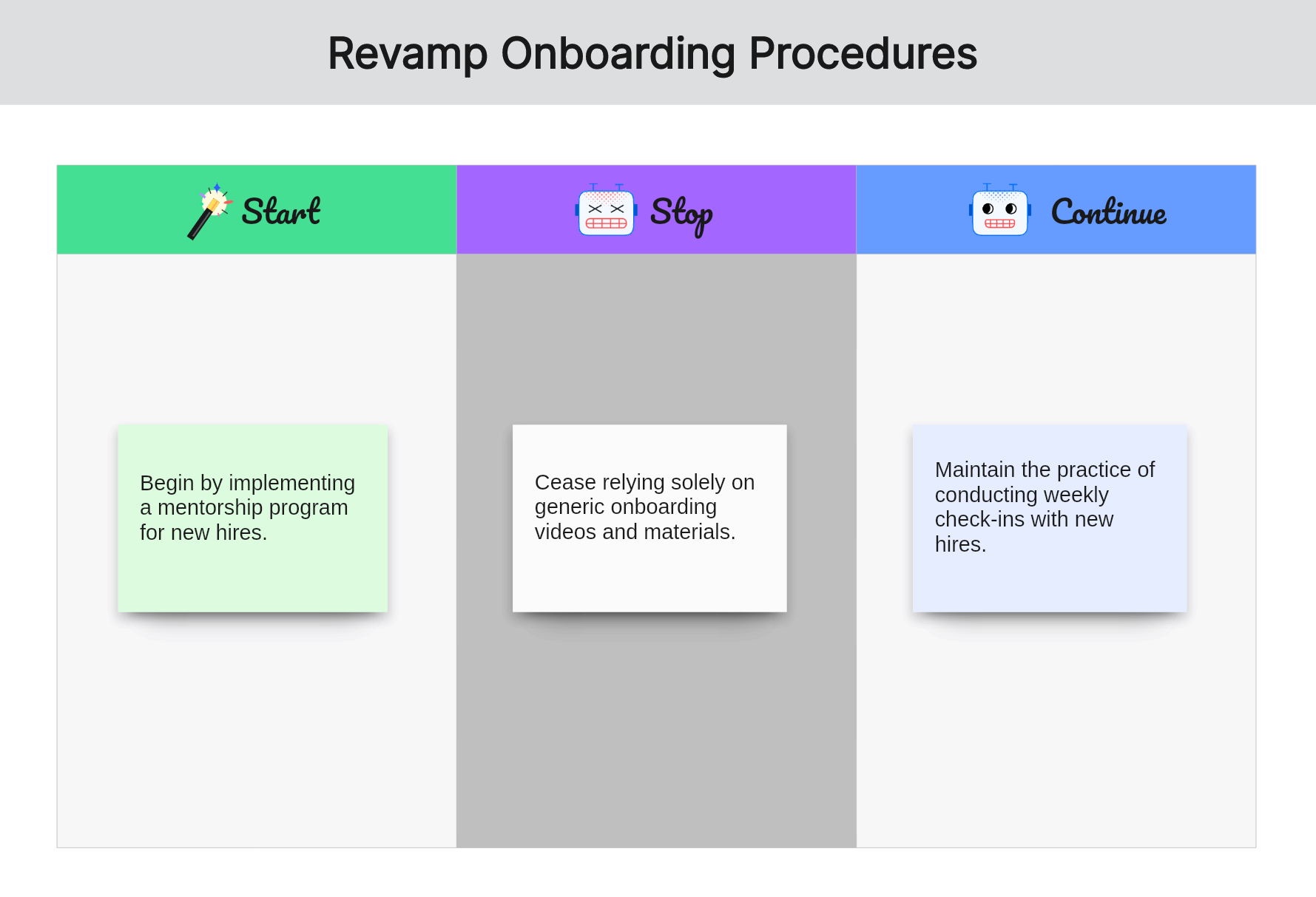
Start Stop Continue Examples for Teams - Enhance Cross-Departmental Communication
Start: Initiate regular cross-functional meetings that bring together representatives from different departments. This will create a platform for open communication, collaboration, and the sharing of insights and expertise. Such interactions can lead to more effective problem-solving and project execution.
Stop: Halt the exclusive reliance on emails for inter-departmental communication. While emails are essential, they can sometimes lead to misunderstandings or delays. Relying solely on them may hinder real-time discussions and hinder collaborative efforts.
Continue: Sustain the practice of utilizing project management tools to track progress on cross-departmental projects. These tools provide transparency and accountability, ensuring everyone is on the same page regarding timelines, milestones, and deliverables.
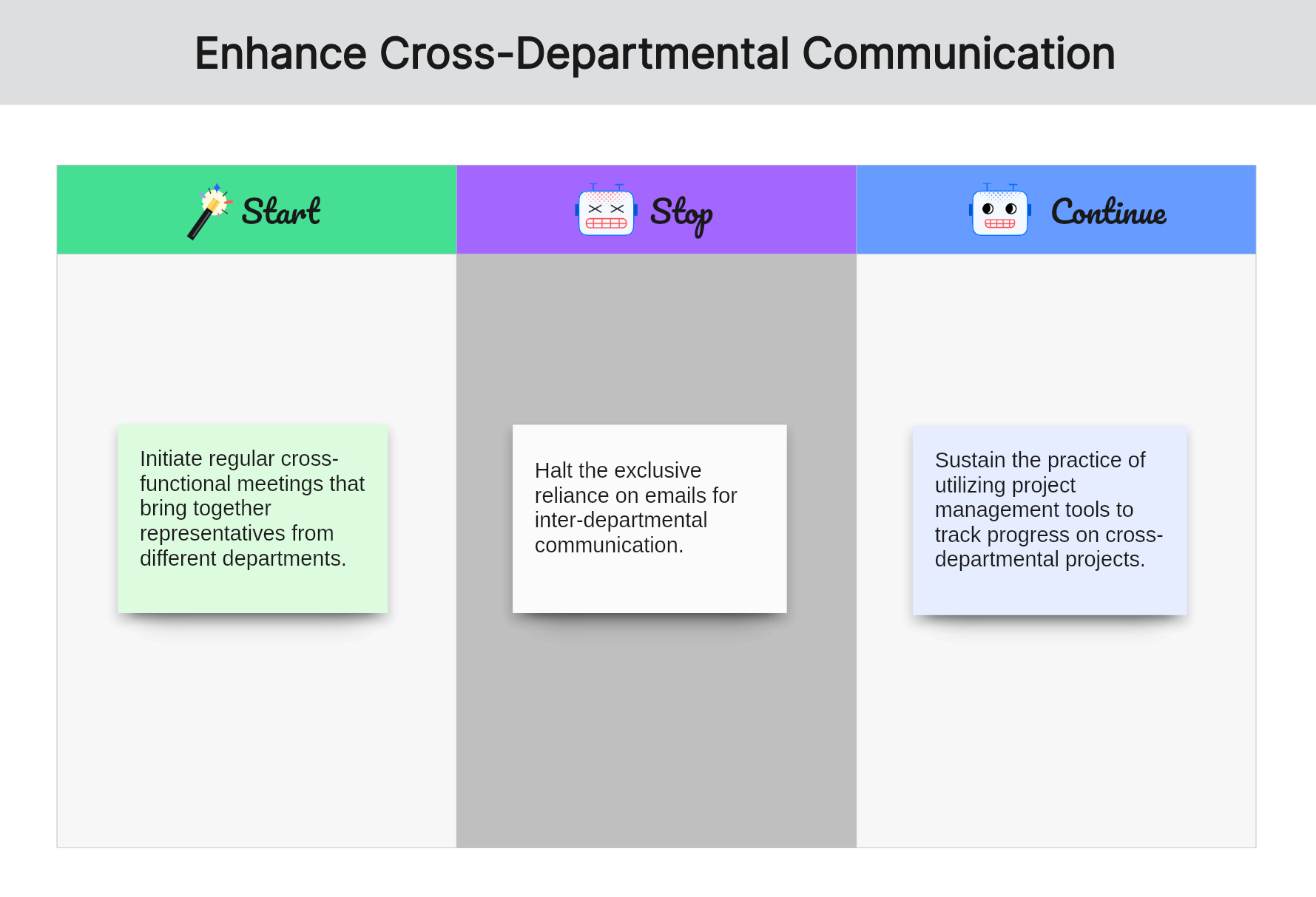
Start Stop Continue Examples for Teams - Streamline Decision-Making Processes
Start: Introduce a clear decision-making framework that outlines the steps involved in making and implementing decisions. This framework should define roles, responsibilities, and timelines, ensuring that decisions are made efficiently and with input from relevant stakeholders.
Stop: Cease the practice of allowing decisions to linger without a designated owner or timeline. This can lead to confusion, delays, and a lack of accountability. Clear ownership of decisions is essential for effective execution.
Continue: Continue seeking input from relevant stakeholders before finalizing choices. This inclusive approach ensures that diverse perspectives are considered, leading to more well-rounded and informed decisions.
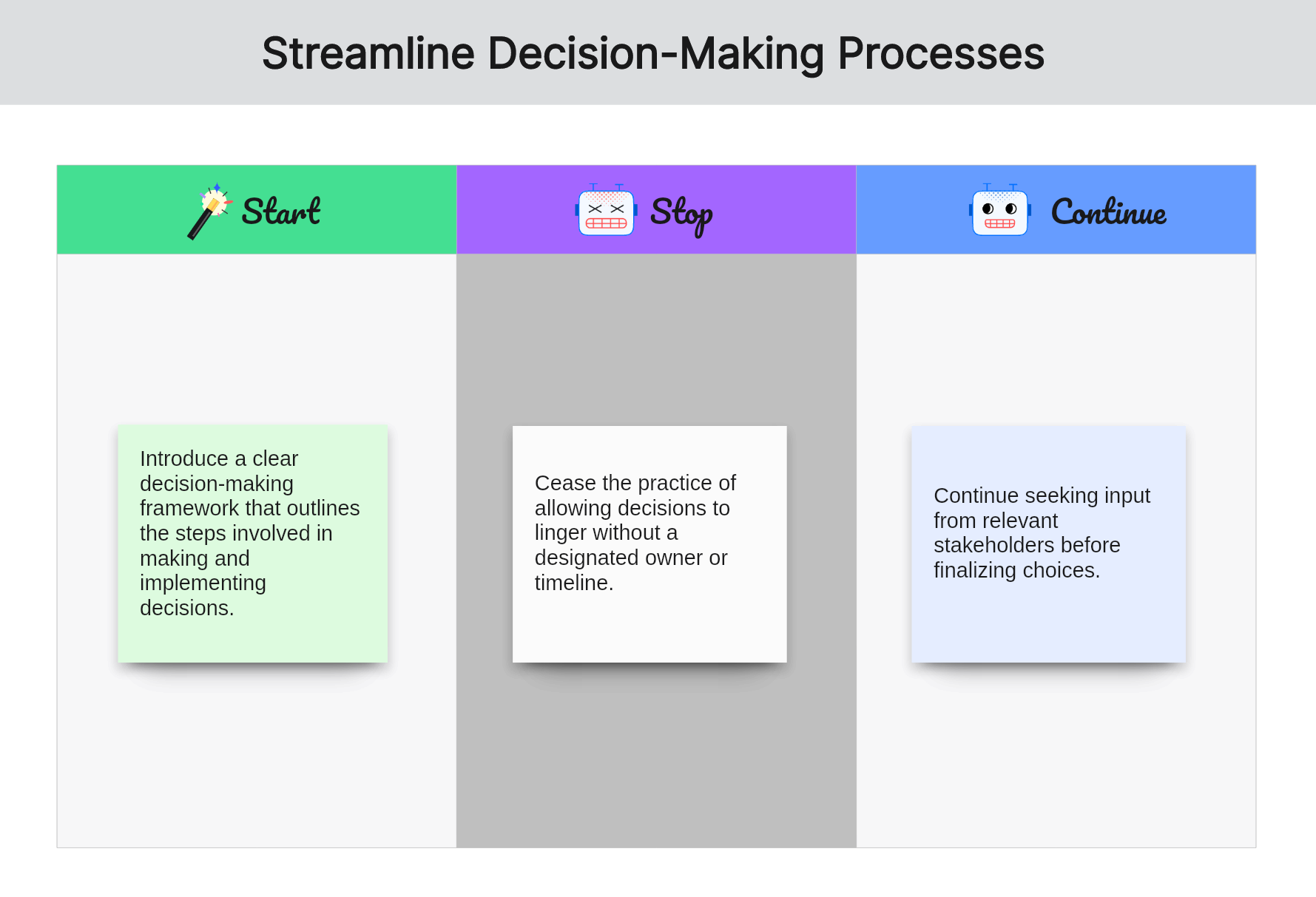
Start Stop Continue Examples for Teams - Prioritize Employee Well-being
Start: Begin by introducing flexible work hours and remote work options. This allows team members to better balance their work and personal lives, reducing stress and improving overall well-being.
Stop: Cease the practice of ignoring signs of burnout or stress in team members. It's crucial to recognize and address these signs promptly to prevent them from escalating and negatively impacting both performance and well-being.
Continue: Maintain the practice of offering wellness programs and mental health resources. These initiatives provide valuable support and resources for team members to take care of their physical and mental well-being.

Start Stop Continue Examples for Teams - Boost Professional Development Opportunities
Start: Launch a mentorship program aimed at skill-building and career growth. Pair experienced team members with those looking to develop specific skills or advance in their careers. This mentorship provides valuable guidance and opportunities for growth.
Stop: Cease relying solely on annual performance reviews for professional development discussions. While important, they often occur infrequently and may not address evolving skill needs. Relying solely on them can hinder continuous skill improvement.
Continue: Maintain the practice of providing access to online learning platforms and workshops. These resources offer ongoing opportunities for team members to expand their skill sets and stay updated with industry trends.

Start Stop Continue Examples for Teams - Foster a Culture of Innovation
Start: Encourage regular idea-sharing sessions where team members can brainstorm and propose innovative solutions. Allocate dedicated time for creative thinking and problem-solving. This fosters a culture that values and supports innovation.
Stop: Cease discouraging unconventional approaches or ideas. Embrace diverse perspectives and be open to exploring new and creative solutions to challenges. This shift in mindset encourages innovation.
Continue: Sustain the practice of recognizing and rewarding innovative contributions. Acknowledging and celebrating innovative thinking reinforces its importance within the team and encourages a culture of continuous improvement.

Start Stop Continue Examples for Teams - Enhance Customer Feedback Loops
Start: Implement regular customer feedback surveys and focus groups to gather insights into customer experiences and preferences. This direct feedback loop helps in making informed decisions and tailoring products or services to customer needs.
Stop: Cease assuming that the team's perception always aligns perfectly with customer needs. Relying solely on internal viewpoints may lead to misalignment with actual customer expectations.
Continue: Maintain the practice of promptly addressing customer concerns and suggestions. This responsiveness demonstrates a commitment to customer satisfaction and builds trust and loyalty.
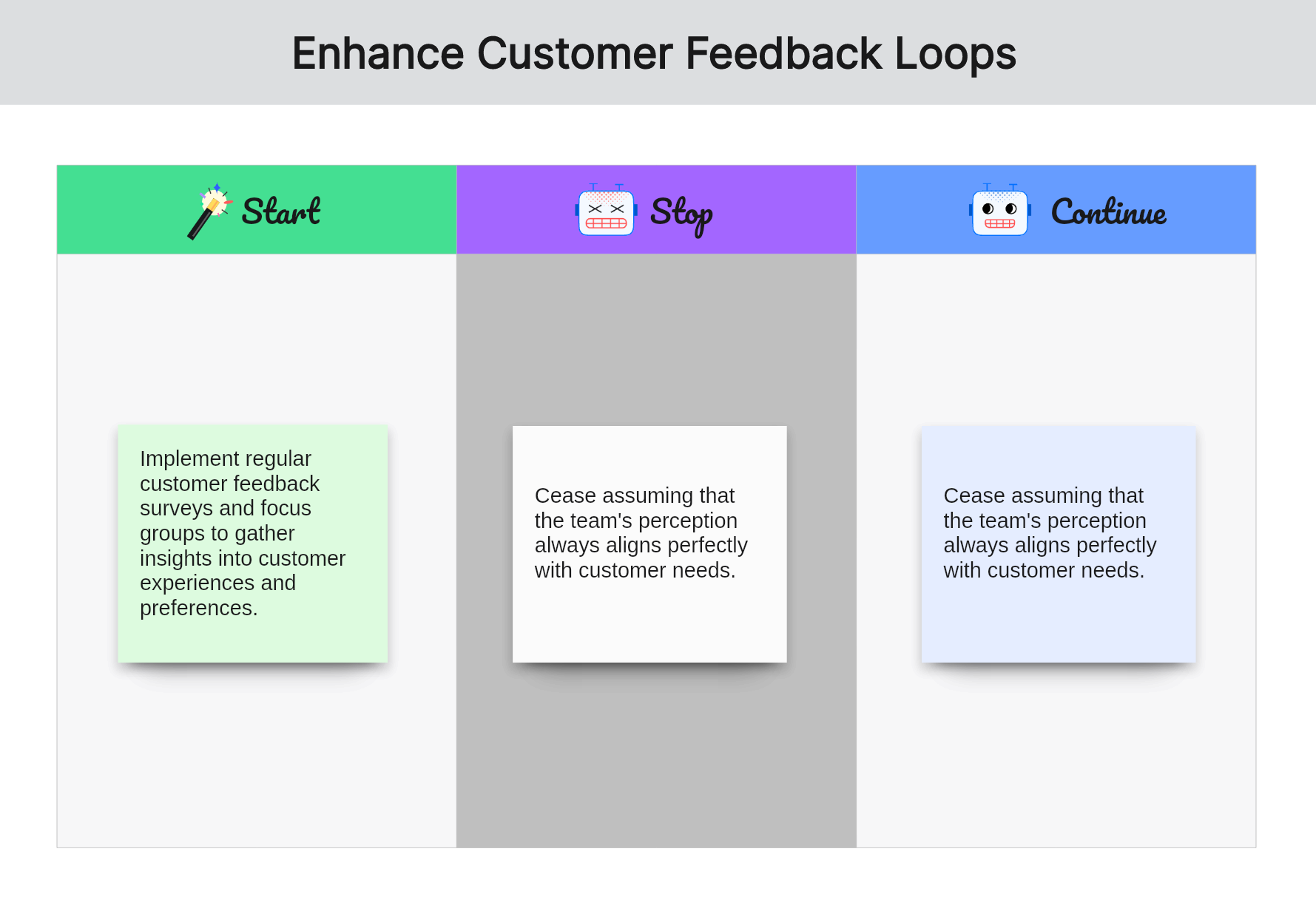
Start Stop Continue Examples for Teams - Strengthen Diversity and Inclusion Initiatives
Start: Develop training programs focused on promoting diversity awareness and inclusion within the team. These programs aim to educate team members about the importance of diversity and provide tools for creating an inclusive work environment.
Stop: Cease overlooking unconscious biases in recruitment and promotions. Implement strategies to identify and mitigate biases, ensuring fair and equal opportunities for all team members.
Continue: Sustain the practice of celebrating and recognizing diverse perspectives and contributions. This includes acknowledging cultural holidays, organizing inclusive events, and showcasing the diverse talents and achievements of team members.
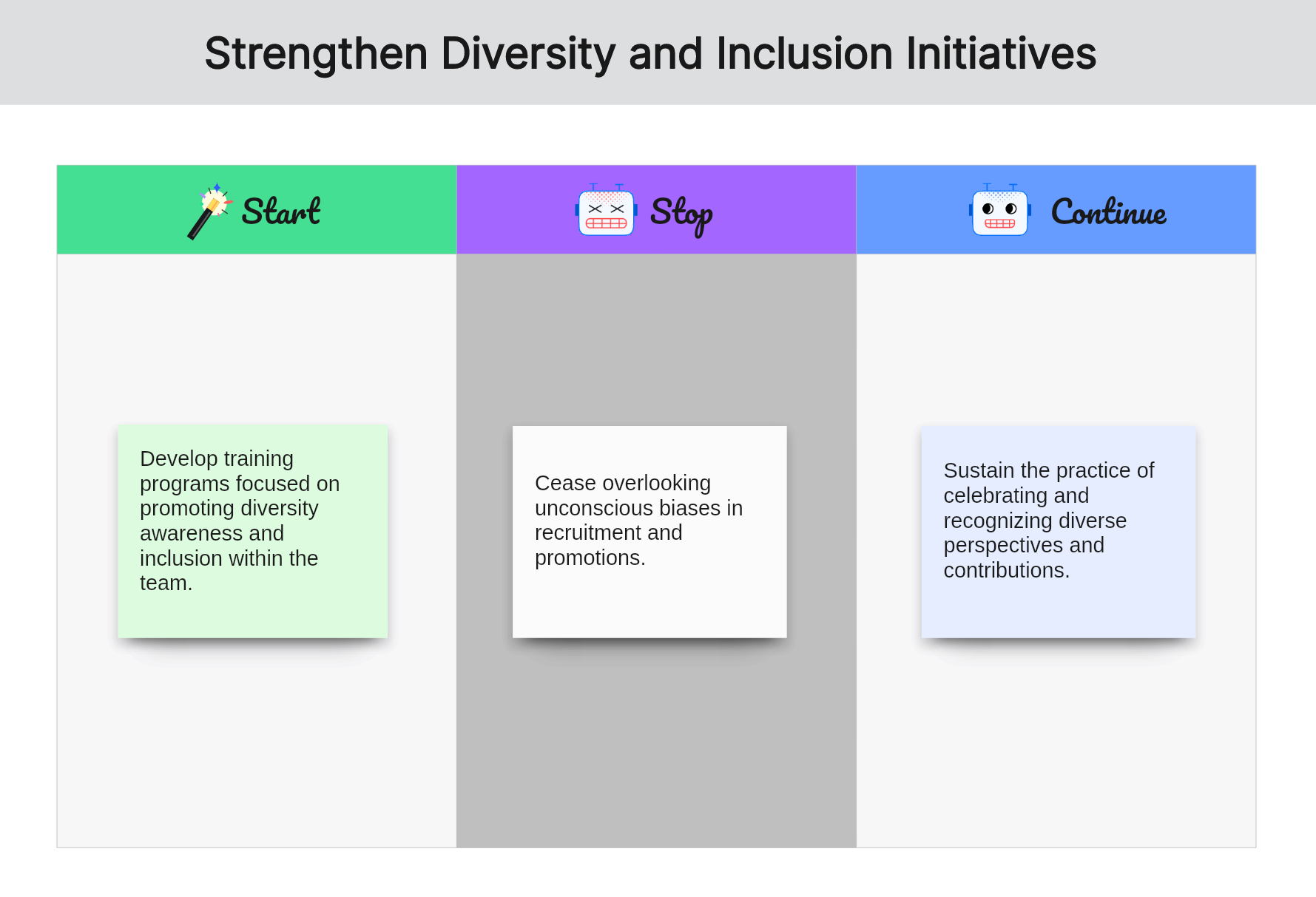
Key Takeaway: A Start Stop Continue Template and a One-stop Tool
If you are seeking a way to practice the start stop continue technique perfectly in your team, the Boardmix provides you a ready-made start stop continue template for seamless feedback implementation. Here's why it's a game-changer for your team:
- Structured Guidance: Our template guides your feedback sessions, ensuring nothing vital is overlooked.
- Customizable:Tailor it to your specific needs, no matter your industry.
- Collaborative: Encourage global team collaboration in real time.
- Action-Oriented:Transform feedback into concrete actions.
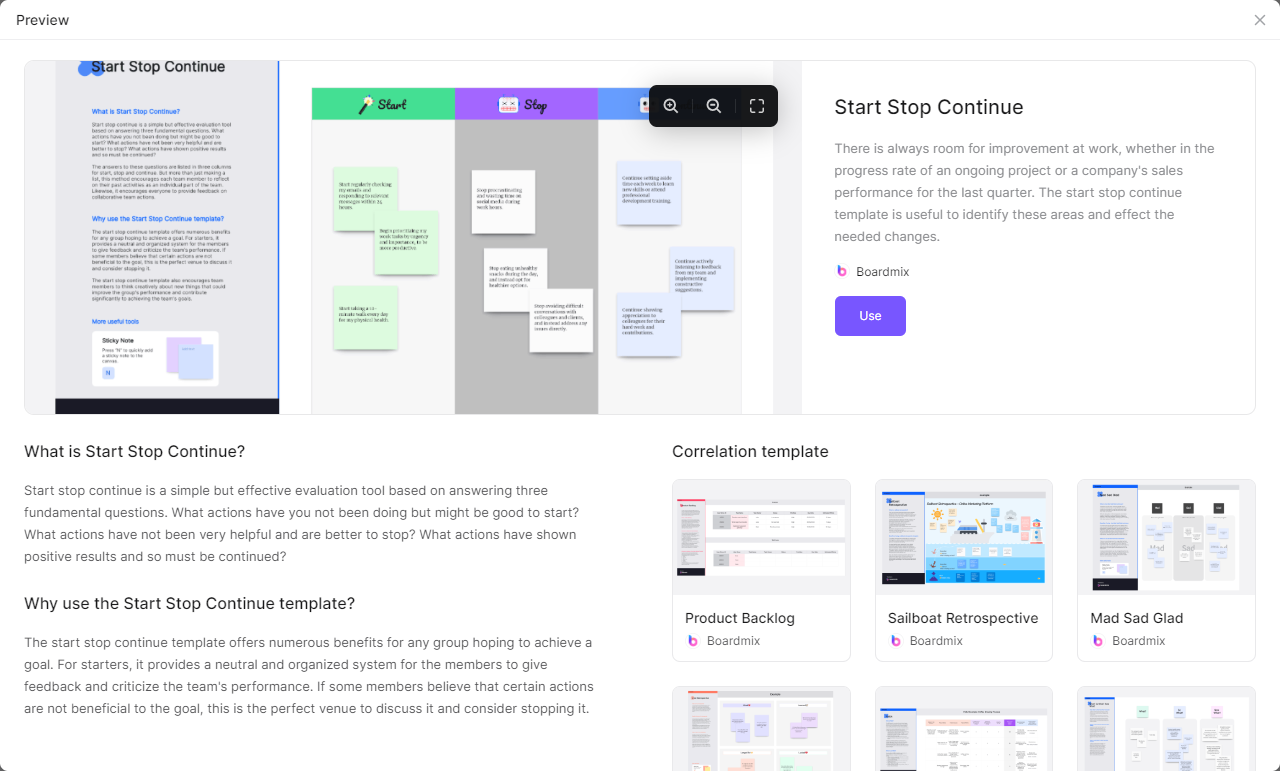
Integrate the Boardmix’s start stop continue template and watch your team become action-driven, transparent, and aligned for success. Ready to supercharge your feedback process? Explore it now and experience structured feedback's power!














